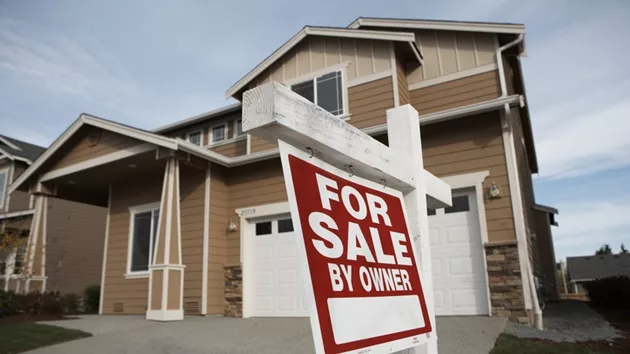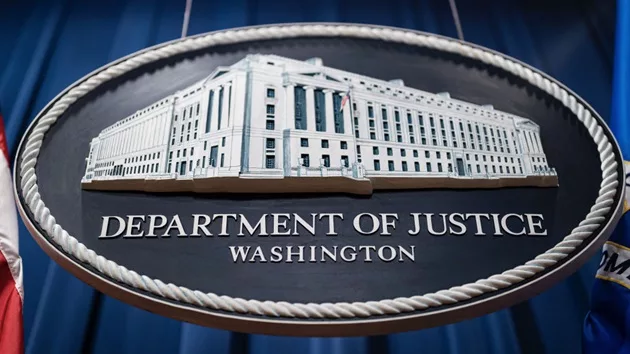The world is shared. It is inhabited by animals – even ourselves – and plants, and is stocked and chocked full of minerals, natural occurrences of the planet, and variations of climate and environment.
These variations have occurred naturally – whether with the assistance of animals, or thanks to seismic internal events or externalities – across known time, history, and the available geological records.
Today, the earth – as an entire unit – is getting hotter. Its climate is changing. Weather is becoming more severe, sporadic, and less predictable in the long and short-term periods, and scientists continue to warn of existential threats to the viability of continued civilization and organic life without serious and widespread individual and collective innovations and reforms.
Innovations and reforms, however, are always in the works. Whether they will exist in time to make the desired positive change and find the wished-for result, always remains to be seen, but they cannot be hurried either. For, in doing so, humanity risks real danger in return for those positive innovations they yearn and strive for.
Carbon capture technology – in the era of fossil fuels and excessive carbon output by industry – has long been hailed by different activists, industries, interest groups, and government officials as a potential means of offsetting human effects on the environment of our shared planet. Yet that which can construct in the proper circumstances can also yield great destruction.
While some environmental activists suggest that carbon capture technology can act as a supplemental – but not primary – means of cleaning the air and taking carbon out of the atmosphere, others see it all as nothing but a means of delaying a greater, and very necessary change.
Moreover, until humanity decides how it will best and most efficiently use the aforementioned mined CO2, that carbon will have to go somewhere else once we’ve sucked it and compressed it all up.
Humans do not have a good track record of putting waste materials in barrels or containers and finding safe, stable, and long-term locations for them; furthermore, the track record concerning pipeline leakages and issues is no better, if perhaps even objectively worse.
So is it a great surprise that folks across Sangamon County, Illinois, and the greater United States, are frustrated with pipeline proposals such as that which this county continues to deal with themselves?
For activists like the Community Housing Navigator for Helping Hands of Springfield’s Nick Dodson – who just also happens to be the chair of the Sangamon Valley Sierra Club – the protests and outcry have nothing to do with ignoring the threat of climate change, but with the threat of the dangers of poor planning, poor track records, poor organization, prevarication, and poor infrastructure.
As he noted, when WMAY had the chance to catch up with him concerning this issue, there is more at play than simply wanting to innovate in a green manner or being in opposition to this urgently necessary human progress.
Nick Dodson: “This 1,300-mile pipeline is unprecedented in size or scope and will be transporting carbon dioxide directly across the heart of the United States of America, starting in South Dakota and ending in Central Illinois.
Hence, safety is a major issue to consider. This transportation will be via pipeline, and to do so must first be liquefied under pressure that is three times the rate of natural gas. Carbon Dioxide pipelines leak, rupture, and explode documented as recently as February of 2020 in Satartia, Mississippi, where almost 50 people were sent to the hospital.
You see, CO2 is an asphyxiant and is heavier than air; CO2 plumes can spread up to a mile and beyond from the eruption location, suffocating living persons and animals, and preventing internal combustion engines in gas-powered vehicles from starting, making escape and rescue difficult or impossible. Citizens near the rupture in Satartia were seen “Walking around like zombies foaming at the mouth.” according to their local sheriff’s office report.
To that end, several locations along the proposed pipeline are within 200-500 feet of communities of homes which would nearly ensure fatalities if a rupture happened nearby.
This project will cross 1,800 rivers, streams, and wetlands, primarily through open trench excavation. The pipeline would also pass under navigable rivers such as the Mississippi, Illinois, Missouri, Des Moines, La Moine, and Spoon.
Furthermore, Navigator Heartland [the company at the heart of this proposal] has never installed, owned, or managed even a single foot of Carbon Dioxide pipeline; why should their maiden voyage be to effectively create a ground zero dumping ground under the literal backyards of people in Central Illinois?”
And that’s not all that Nick had to say either. Our discussion centered on this environmentally and socially crucial topic, and Nick and the Sierra Club certainly provided great swaths of material and information to furnish the thoughts of the community with.
WMAY offers you the rest of the interview below, and urges each and every citizen to research the facts of the matter as it relates to CO2, the proposed pipeline that would find itself meandering through Sangamon County, Illinois, and beyond; to learn is to grow, after all.
WMAY: The pleasure is ours as always of course. What made you go to these meetings to fight for this moratorium? What is the origin of your passion for the environment and, of course, our Sangamon County?
ND: “I have a ton of love, admiration, and respect for the people, wildlife, and land of Central Illinois. I was born and raised in Jacksonville and have lived in this area all of my life. I had the privilege of seeing a lot of the country at a young age and knowing how incredibly special our people are and how valuable our land is, and I would do anything to protect both.
Greenwashing is when someone tries to make something seem better for the environment than it really is, in order to trick people into buying it or supporting it. When I learned that a company from out of state was attempting to leverage eminent cross-country domain to obtain land and was ultimately planning to dump millions of tons of carbon dioxide yearly into caves and call it “green,” I saw red flags begin to rise. From the way I see it, this is the epitome of greenwashing and incremental change.
Further, when the lobbyist class, the fossil fuel industry, and our government say it’s good for the environment, I take pause as we have been led down this path in many other scenarios that ended up being quite the opposite.
I began by writing Letters to the Editor in early 2022; I sent them to publications in cities and counties where the pipeline was proposed to pass through to help others understand some of the implications.
I then started holding educational events about the pipeline across central Illinois that were open to the public having turnouts in the hundreds of farmers, landowners, and environmentalists deeply opposed to this project.”
WMAY: Were you campaigning with, on behalf of, or in concert with any other individuals or organizations – such as the Sierra Club – and were there advocates for the pipeline there to speak as well?
ND: “I am campaigning on my commitment to the health and well-being of the people, animals, and environment of Central Illinois. Organizationally I am the chair of the Sangamon Valley Sierra Club, which is a grassroots environmental organization – our mission is to protect the planet’s wild places, promote clean energy solutions, and fight for environmental justice.
The Sierra Club is one of the oldest environmental advocacy organizations in the country, with over 3 million members nationwide. Sierra Club is also a member of the Coalition to Stop CO2 Pipelines. We were also in attendance with the Resistor Sisters, Sustainable Springfield, and a few other groups.
And – to answer the second part of the question – there were more than 20 people that showed up to oppose this pipeline, including an interesting intersectionality of individuals; from local landowners and farmers, to people committed to renewable energy and protecting the environment and community health of Central Illinois, it was a myriad coalition.
Only two of us spoke at this specific meeting – each being left below in different formats – and the zoning board mentioned that their meetings were not usually so well attended; there were really no empty seats to be had at all.”
Sangamon Valley Sierra Club’s Nick Dodson:
Sangamon County Landowner Kathleen Campbell: “First, I thank the Sangamon County Board and Zoning Committee for listening to us, your citizens, regarding our concerns about the Navigator Pipeline. You have listened, and you have been there for us. We realize that you have jurisdictional constraints. But we citizens have no jurisdiction, and with automatic eminent domain, if the ICC approves this project, apparently, we don’t have much for property rights either.
However, hopefully we have influence, as does the Sangamon County Board. Please don’t underestimate your influence in clearly opposing this dangerous, hazardous waste pipeline at the ICC and in the media to educate the public. Just as one citizen may not have adequate influence, many citizens together can. Similarly, we ask Sangamon County to move to full opposition in their intervention at the ICC, as have Knox, McDonough, Christian, and Hancock Counties. Counties voicing combined opposition have influence, particularly on safety, EMS services, and property values.
Similarly, we ask you to extend your moratorium to join the moratoriums already in place in Christian, Fulton, McDonough, and Montgomery Counties. You also join the opposition of the Farm Bureaus of Christian, Fulton, McDonough, and Montgomery Counties, plus multiple other landowner intervenors and Citizens Against Heartland Greenway Pipeline. How valuable is your opposition? Just look at the millions of dollars that Navigator is offering you for your support through the Project Development agreements they offer you tonight.
We, citizens, can’t offer you millions of dollars. But we who live in Sangamon County invest more here than Navigator ever could. We invest our lives, our families, our homes, our volunteer work, and our careers. The money we earn, we spend here rather than siphoning it off out of state. Further, we will be here long after Navigator takes the money and leaves us with permanent damage to land and safety. All we ask is that we remain safe in our homes without worrying about a horrible death or disability from a rupture and that we retain some of the most beautiful and productive farmland in the world without this pipeline’s damage for generations to come.
Please pass the moratorium, pass the opposition resolution, move to full opposition at the ICC, and turn down these Project Development Agreements because, we, your citizens, need your opposition to this damaging and dangerous pipeline clearly stated for all to see.
Thank you.”
WMAY: What could residents of the area do should, they wish to make clear their disdain for this project going forward?
ND: “While Navigator Heartland Greenway may be persistent in its attempts to endanger Illinoisans through the construction of this pipeline, they are up against people like myself and others who will not let a greedy corporation take our land through eminent domain without a fight.
We have organized a ton of evidence, articles, webinars, and other great information below!
We even have a fantastic video featuring the likes of Dr. Mark Jacobson, Director of Atmosphere/Energy Program, Stanford University, June Sekera – Senior Research Fellow of Boston University’s Global Development Policy Center, and Dr. Albert Karvelis – Risk and Safety Analyst and Fellow-American Society of Mechanical Engineers; they all deeply oppose this project, and offer quantifiable data, science, and research to reinforce their stances below as well!
We have also started a Citizens Against Heartland Greenway Pipeline to intervene with the Illinois Commerce Commission (ICC) to Stop Navigator’s Pipeline. Unfortunately, the ICC will not consider comments from individuals on this – only local forms of government, municipalities, and 501c3s – which seems absolutely ludicrous to me. We have over 100 members that have helped to fund a private lawyer to help fight this absolute boondoggle.”
Our thanks to Nick Dodson, the Sangamon Valley Sierra Club, and those other individuals who’ve given their effort, energy, and passion in some manner.











